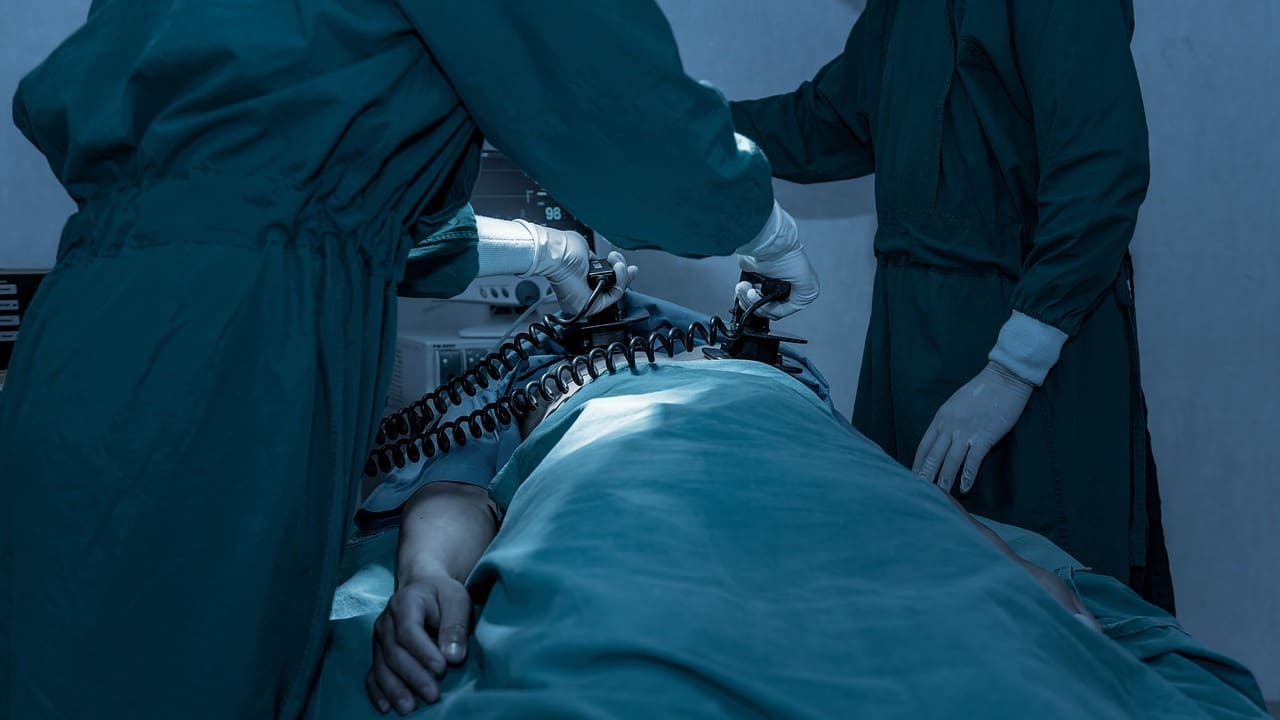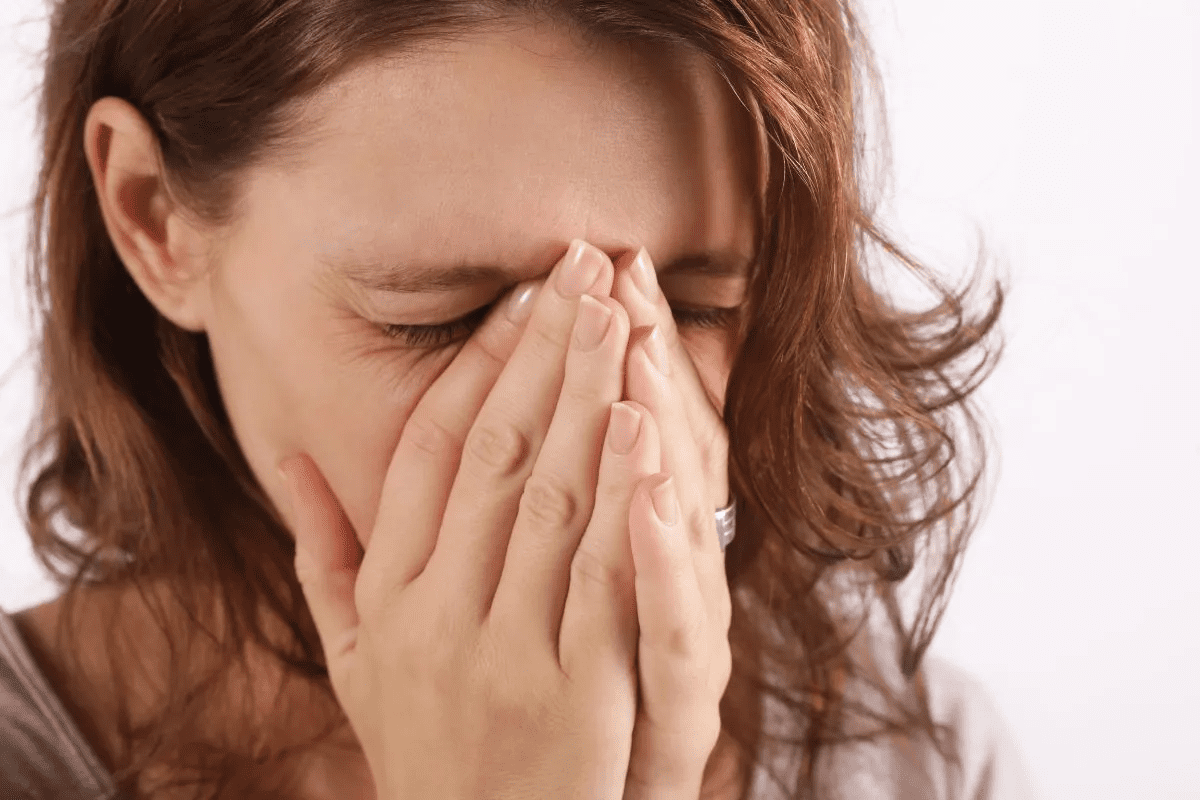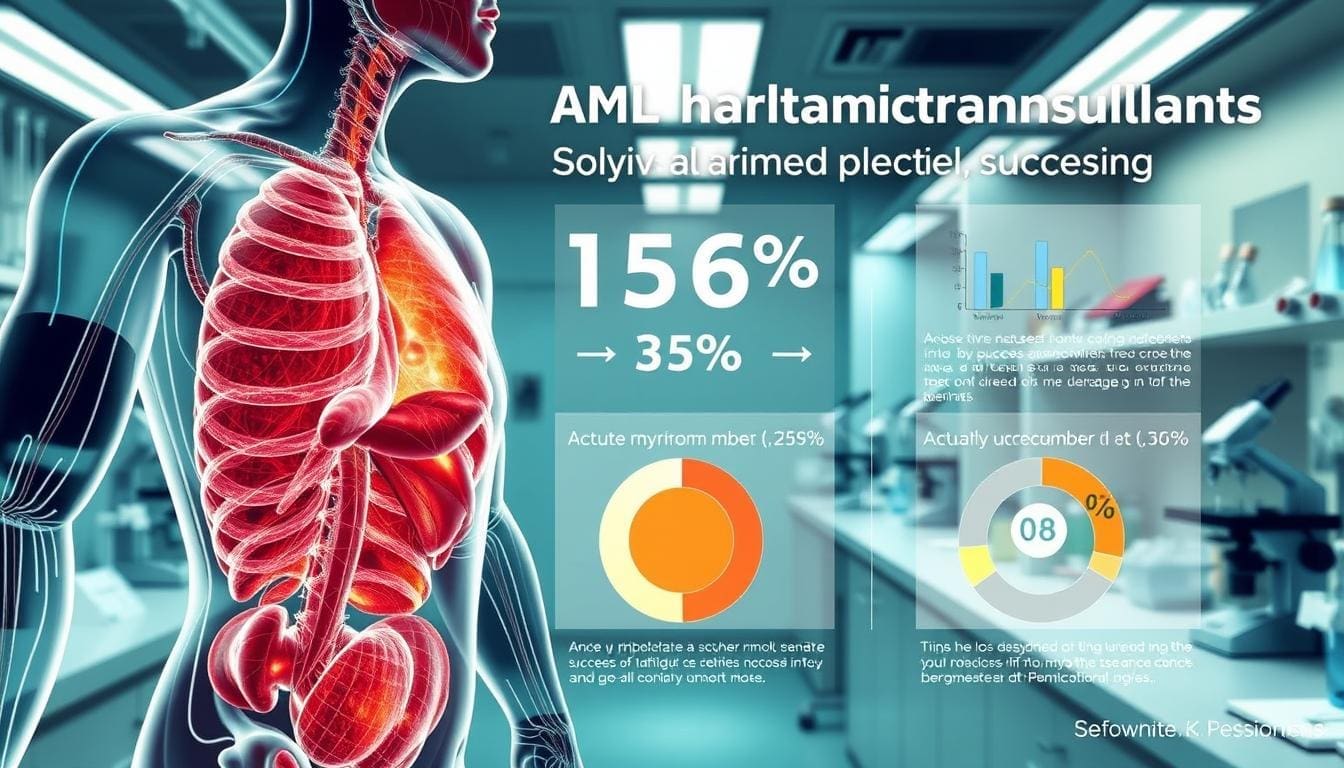Last Updated on November 26, 2025 by Bilal Hasdemir

Chemotherapy is a common treatment for many cancers. It can affect the body in big ways, including weight loss. Many patients lose weight during chemotherapy, which adds to the stress of cancer treatment.
It’s important for patients to know how chemotherapy affects weight. The number of chemotherapy cycles and how long treatment lasts can change how much weight is lost or gained.
Key Takeaways
- Chemotherapy can lead to significant weight changes in cancer patients.
- The impact of chemotherapy on weight varies among individuals.
- Understanding chemotherapy cycles is essential for managing weight changes.
- Weight loss during chemotherapy can be a concern and should be monitored.
- Effective management of weight changes is key during and after cancer treatment.
Understanding Chemotherapy: What It Is and How It Works
Chemotherapy is key for cancer patients. It uses drugs to attack cancer cells. This treatment aims to kill or stop cancer cells from growing.
Definition and Purpose of Chemotherapy
Chemotherapy uses drugs to kill cancer cells. It targets cells that grow fast, which is common in cancer. It can be used alone or with other treatments like surgery and radiation.
The goal of chemotherapy changes based on the cancer type and stage. It can aim to cure, control, or ease symptoms. Sometimes, it’s used to shrink tumors before surgery or to kill leftover cancer cells after.
How Chemotherapy Targets Cancer Cells
Chemotherapy targets cells that grow quickly, like cancer cells. The drugs disrupt cell division, causing cell death. Each drug works differently but all aim to stop cancer cells from growing.
Some drugs target specific molecules in cancer cells, making them more precise. But, most drugs can harm normal cells too, causing side effects.
Types of Cancer Commonly Treated with Chemotherapy
Chemotherapy treats many cancers, including breast, lung, colon, and leukemia. The choice of chemotherapy depends on the cancer type, stage, and patient’s health.
It’s often used for cancers that have spread. It’s also effective for cancers that respond well to chemotherapy, like some leukemia and lymphoma.
The Relationship Between Chemotherapy and Weight Changes
It’s important for patients to understand how chemotherapy affects their weight. Chemotherapy uses drugs to kill cancer cells and can change the body in many ways, including weight.
Why Weight Loss Often Occurs During Treatment
Many patients lose weight during chemotherapy. This is due to several reasons like a decrease in appetite, nausea, and changes in taste. Chemotherapy-induced nausea can make it hard to want to eat, leading to poor nutrition.
Some chemotherapy drugs can also cause mouth sores or dry mouth, making it hard to eat. These issues together can lead to weight loss. If not managed, it can cause malnutrition and other health problems.
“The nutritional challenges faced by cancer patients undergoing chemotherapy are multifaceted and require a detailed management plan.”
When Chemotherapy Can Cause Weight Gain
While weight loss is common, some patients may gain weight. This can happen due to certain chemotherapy drugs that increase appetite or cause fluid retention.
Corticosteroids, used with chemotherapy, can also cause weight gain. They increase appetite and cause the body to hold onto fluid. Reduced physical activity due to treatment side effects can also lead to weight gain.
| Factors Influencing Weight Gain | Description |
| Increased Appetite | Chemotherapy medications and corticosteroids can stimulate appetite. |
| Fluid Retention | Some treatments cause the body to retain fluid, leading to weight gain. |
| Reduced Physical Activity | Side effects from chemotherapy can limit a patient’s ability to engage in physical activity. |
Metabolic Changes During Treatment

Chemotherapy can also change how the body uses nutrients. These changes can affect weight.
Some patients may see changes in their metabolic rate, which can impact weight.
Managing these changes needs a full approach. This includes making dietary changes and, if possible, physical activity that fits the patient’s condition.
Common Side Effects of Chemotherapy
It’s important for patients to know about chemotherapy side effects. This treatment is good at fighting cancer but can affect the body in many ways.
Physical Side Effects
Chemotherapy can make patients feel tired and weak. It can also cause nausea, vomiting, hair loss, and mouth sores.
- Fatigue: Feeling extremely tired or weak.
- Nausea and Vomiting: Medications can help manage these symptoms.
- Hair Loss: Many chemotherapy drugs cause hair loss.
- Mouth Sores: Sores or ulcers can develop in the mouth.
Emotional and Psychological Effects
Chemotherapy’s emotional and psychological effects are just as important.Patients may feel anxious, depressed, or experience mood swings and cognitive changes.
- Anxiety and Depression: The stress of dealing with cancer and its treatment can lead to mental health challenges.
- Mood Swings: Hormonal changes and the stress of treatment can cause mood swings.
- Cognitive Changes: Some patients report difficulties with concentration and memory.
Short-term vs. Long-term Side Effects
It’s vital to know the difference between short-term and long-term side effects. Some effects go away soon after treatment ends. But others can last for years, even causing heart problems or secondary cancers.
- Short-term Side Effects: Typically resolve within weeks or months after treatment ends.
- Long-term Side Effects: Can persist or appear years after treatment, including heart problems or secondary cancers.
Managing these side effects well is essential. It helps improve patients’ quality of life during and after chemotherapy.
How Many Rounds of Chemo Is Normal?

Patients often ask how many rounds of chemotherapy are normal. It depends on several factors. The number of rounds can change based on the cancer type, stage, patient’s health, and treatment goals.
Standard Treatment Protocols
Chemotherapy treatment plans follow clinical guidelines and research. For many cancers, treatment is in cycles lasting weeks. The number of cycles can be from 4 to 8 or more, depending on the plan.
In breast cancer, chemotherapy might be given in 4 to 6 cycles, each lasting 2 to 3 weeks. For some lymphomas, treatment can be in 6 to 8 cycles.
| Cancer Type | Typical Number of Chemo Cycles | Cycle Duration (Weeks) |
| Breast Cancer | 4-6 | 2-3 |
| Lymphoma | 6-8 | 2-3 |
| Colorectal Cancer | 6-12 | 2 |
Factors That Determine Treatment Length
Several factors affect chemotherapy treatment length. These include the cancer’s stage and type, the patient’s response, and their health. For example, early-stage cancer might need fewer cycles than advanced-stage cancer.
“The goal of chemotherapy is to control the growth of cancer cells, and the number of treatment cycles is tailored to achieve this goal while minimizing side effects.”
Why Some Cancers Require More Rounds Than Others
Different cancers respond differently to chemotherapy. This affects how many cycles are needed. Some aggressive cancers might need more intense treatment, with more frequent or longer cycles.
Cancer treatment is complex, highlighting the need for personalized care. Understanding what affects treatment length helps patients navigate their journey better.
Chemotherapy Cycles Explained
Chemotherapy is given in cycles to let the body rest between treatments. This approach is key for the therapy’s success and the patient’s health.
What Is a Cycle of Chemotherapy?
A cycle of chemotherapy is the time when treatment is given and then a break. The cycle’s length changes based on the cancer type, drugs used, and how well the patient responds.
Chemotherapy cycles aim to be effective while protecting healthy cells. The break is vital for the body to heal and get stronger.
The Purpose of the 21-Day Chemo Cycle
The 21-day chemo cycle is a common treatment plan. It starts with chemotherapy on the first day and then a 21-day break. This cycle targets cancer cells when they’re most active and lets the body recover.
This cycle works well for some cancers, balancing treatment intensity and recovery. But, the cycle’s length and frequency can change based on the patient’s needs and treatment goals.
How Recovery Periods Work
Recovery periods are key in chemotherapy cycles. They let the body fix and grow healthy cells harmed by chemotherapy. The break’s length depends on the treatment and the patient’s health.
Good recovery periods help manage side effects and prepare for more treatments. Doctors watch patients closely during these times to adjust treatment plans as needed.
| Chemotherapy Cycle Aspect | Description | Importance |
| Chemotherapy Administration | Treatment given to target cancer cells | Essential for treating cancer |
| Recovery Period | Time allowed for the body to recover | Crucial for managing side effects |
| Cycle Duration | Varies based on treatment protocol | Determines treatment frequency |
Understanding chemotherapy cycles, like the 21-day chemo cycle and recovery periods, is key for cancer patients. Knowing these concepts helps patients manage their treatment better and make informed decisions about their care.
Duration of Chemotherapy Sessions
Knowing how long chemotherapy sessions last is important for patients. It helps them get ready. Chemotherapy is a detailed treatment that needs careful planning.
How Long a Single Treatment Takes
How long a single chemotherapy session lasts can vary a lot. Some might only take a few minutes, while others can last hours. The time depends on the drugs used and the patient’s treatment plan.
Factors influencing session length include:
- The type of chemotherapy drugs
- The method of administration (e.g., intravenous, oral)
- The patient’s overall health
Variations Based on Treatment Type
Chemotherapy treatments vary in length. For example, intravenous chemotherapy takes longer because it needs an IV line and monitoring. Oral chemotherapy is quicker because it’s taken at home.
| Treatment Type | Typical Session Length |
| Intravenous Chemotherapy | 1-4 hours |
| Oral Chemotherapy | Minimal time at clinic, self-administered at home |
| Combination Therapy | Varies, often longer than single modality |
Preparing for Different Session Lengths
Being prepared is essential for managing chemotherapy sessions. Patients should:
- Bring entertainment or work to pass the time
- Have a companion for support
- Stay hydrated and bring snacks
It’s also important to talk about any concerns or questions with the healthcare team before treatment.
Chemotherapy Treatment Schedules
Chemotherapy plans are made just for each patient. They consider the cancer type and stage. Making these plans is complex. It aims to make treatments work best while reducing side effects.
Frequency of Treatments
How often chemotherapy is given changes with the cancer type and patient health. Treatments can be daily, weekly, every two weeks, or monthly. For example, glioblastoma treatment shows the need for custom schedules to better patient results.
Common treatment frequencies include:
- Weekly treatments for certain aggressive cancers
- Every two weeks for treatments that require longer recovery periods
- Monthly treatments for some maintenance or palliative care regimens
How Schedules Are Determined
Chemotherapy plans are based on several things. These include the cancer type, stage, patient health, and the treatment type. Doctors use guidelines, research, and patient info to make a plan just for them.
The key factors influencing treatment scheduling include:
- The type and stage of cancer
- The patient’s overall health and medical history
- The chemotherapy regimen and its possible side effects
- The treatment goals, whether curative, adjuvant, or palliative
Adjusting Schedules Due to Side Effects
Side effects from chemotherapy can really affect a patient’s life. To deal with severe side effects, treatment plans might change. This could mean delaying treatments, lowering doses, or switching treatments.
Adjustments are made based on:
- The severity and length of side effects
- The patient’s ability to recover between treatments
- Changes in the patient’s overall health status
By watching patients closely and making changes as needed, doctors can lessen side effects. This helps make treatments more effective.
Different Types of Chemotherapy Administration
Cancer treatment through chemotherapy uses many methods. Each has its own benefits and things to consider. The choice depends on the cancer type, its stage, and the patient’s health.
Intravenous (IV) Chemotherapy
IV chemotherapy is a common method. It delivers drugs directly into a vein. This way, high doses can be given quickly, often in a clinical setting.
Benefits of IV Chemotherapy:
- Rapid delivery of high doses
- Effective for a wide range of cancers
- Can be used in combination with other treatments
Oral Chemotherapy (Pills and Tablets)
Oral chemotherapy uses pills or tablets. It’s growing in popularity because it’s easy to take at home.
Considerations for Oral Chemotherapy:
- Patient adherence is key
- May have different side effects than IV chemotherapy
- Requires careful dosing and monitoring
Other Methods of Administration
There are other ways to give chemotherapy, like intra-arterial and intraperitoneal. Intra-arterial delivers drugs to the tumor through an artery. Intraperitoneal is for cancers in the abdominal cavity.
| Administration Method | Description | Common Uses |
| IV Chemotherapy | Drugs delivered into a vein | Wide range of cancers |
| Oral Chemotherapy | Pills or tablets taken orally | Various cancers, convenient for home treatment |
| Intra-arterial Chemotherapy | Drugs delivered into an artery | Liver cancer, certain other localized tumors |
Oral Chemotherapy: Pills and Their Side Effects
Oral chemotherapy is becoming more common in cancer treatment. It’s easy to take and works well for some cancers. Instead of getting shots or IVs, patients take pills or capsules.
Cancer Types Treated with Oral Chemotherapy
Oral chemotherapy helps with many cancers. This includes some types of leukemia, lymphoma, and breast cancer. The right treatment depends on the cancer’s type and the patient’s health.
For example, some oral medicines help with chronic myeloid leukemia (CML) and gastrointestinal stromal tumors (GIST). These pills have changed how we treat these cancers, making treatment easier for patients.
Unique Side Effects of Oral Chemotherapy
Oral chemotherapy has some side effects like traditional chemotherapy. But, it also has its own issues. One big challenge is making sure patients take their medicine as directed.
Common side effects include:
- Diarrhea or constipation
- Skin rashes or changes
- Fatigue and weakness
- Nausea and vomiting
- Changes in blood counts
It’s important for patients to know about these side effects. They should talk to their doctor about any worries.
Adherence Challenges and Solutions
It can be hard to stick to oral chemotherapy because patients take it themselves. They might forget or have side effects that make it tough.
To help, patients can try:
- Using pill boxes or reminder apps
- Setting regular reminders
- Keeping a medication diary
- Having a support system, such as family or friends, to help monitor medication intake
Doctors can also help a lot. They can give clear instructions, watch for side effects, and help with any problems.
How Long Does Chemotherapy Stay in Your Body?
It’s important for patients to know how long chemotherapy stays in their body. Chemotherapy drugs target and kill cancer cells. But, they can stay in the body for a while after treatment.
The Elimination Process
The body gets rid of chemotherapy drugs through the liver and kidneys. These organs break down and remove the drugs. The elimination half-life of a drug is how long it takes for its concentration to drop by half. This time can vary a lot between different drugs.
Chemotherapy drugs leave the body through urine, feces, and sweat. How fast they are removed depends on the drug type, the patient’s metabolism, and their health. Some drugs stay in the system longer than others.
Long-term Effects After Treatment Ends
After chemotherapy, patients may face long-term effects. These can include tiredness, nerve damage, and changes in thinking. How long these effects last and how severe they are can differ a lot between people.
Some chemotherapy drugs can have long-term impacts on the body. This can include a higher risk of getting other cancers or damage to organs. Knowing about these effects is key for taking care of oneself after treatment.
Factors Affecting Clearance Time
Several things can affect how long chemotherapy stays in the body. These include:
- The type and dose of chemotherapy drugs used
- The patient’s age and overall health
- The presence of any kidney or liver dysfunction
- Metabolic rate and genetic factors
| Factor | Impact on Clearance Time |
| Type and Dose of Chemotherapy | Different drugs have varying half-lives and clearance rates. |
| Patient’s Age and Health | Older patients or those with comorbidities may have slower clearance. |
| Kidney or Liver Dysfunction | Impaired organ function can significantly delay drug clearance. |
Knowing these factors can help patients and doctors manage treatment and care better.
Strategies to Maintain Healthy Weight
Keeping a healthy weight during chemotherapy is important. Consuming enough calories and protein is essential. Focus on foods like fruits, vegetables, whole grains, lean proteins, and healthy fats.
- Eat smaller, more frequent meals to manage appetite changes.
- Incorporate high-calorie, high-protein foods like nuts, dried fruits, and avocados.
- Stay hydrated by drinking plenty of water and other fluids.
Dealing With Appetite Changes and Nausea
Chemotherapy can change appetite and cause nausea. Ginger and peppermint can help. Try ginger tea, ginger ale, or peppermint candies.
Foods to Embrace and Avoid
Some foods help, while others hinder, during chemotherapy. Foods rich in antioxidants, like berries and leafy greens, are good. Avoid raw or undercooked foods that may have bacteria.
| Foods to Embrace | Foods to Avoid |
| Lean proteins like chicken and fish | Raw or undercooked meats and eggs |
| Whole grains like brown rice and quinoa | High-fiber foods that can cause discomfort |
| Fruits and vegetables rich in antioxidants | Spicy or fatty foods that can irritate the stomach |
When to Consult a Nutritionist
Seeing a nutritionist is a good idea. They can give personalized advice based on your needs and treatment. A nutritionist helps manage side effects and ensures you get the right nutrients.
Support Systems and Resources During Treatment
Support systems are key for patients facing cancer treatment. They help manage the physical, emotional, and financial stress of cancer care. A strong support system can make a big difference.
Medical Support Team Roles
The medical support team is vital for patients. It includes oncologists, nurses, social workers, and more. Oncologists plan the treatment, and nurses are the main contact for patients. They offer education and support.
Social workers help with the emotional and practical sides of cancer treatment. They support both patients and their families.
Support Groups and Counseling
Support groups and counseling offer emotional help. Support groups are in-person or online. They let people share their stories and connect with others.
Counseling services help with anxiety, depression, and other emotional issues. They are a big help during cancer treatment.
Financial Resources for Cancer Patients
Cancer treatment can be expensive. Financial help is a big part of the support system. Patients can find government programs, non-profit organizations, and patient assistance programs from drug companies.
Conclusion: Navigating Chemotherapy Treatment
Chemotherapy treatment can be tough, but knowing what to expect helps. It’s a key part of cancer care. Understanding its effects and how it’s given is key for patients.
We’ve looked at many parts of chemotherapy in this article. This includes what it does, how it’s given, and its side effects. Knowing how it works helps patients get ready for treatment.
Getting through chemotherapy needs more than just medical help. Good nutrition and emotional support are also important. By eating right, managing side effects, and having a support system, patients can feel better during treatment.
FAQ
What is chemotherapy and how does it work?
Chemotherapy is a treatment for cancer that uses drugs. It targets cells that grow fast, like cancer cells.
How long does chemotherapy take?
Chemotherapy’s length varies. It depends on the cancer type, stage, and how well you respond. It can last from months to years.
What is a 21-day chemo cycle?
A 21-day chemo cycle is a common schedule. You get chemotherapy on day one and then rest for 21 days before the next treatment.
How many rounds of chemotherapy are normal?
The number of rounds needed varies. It depends on the cancer type and treatment plan. Some may need 3-6 rounds, others fewer or more.
How long is a chemo session?
Chemo sessions can last from 30 minutes to hours. It depends on the treatment and your plan.
What are the common side effects of chemotherapy?
Side effects include nausea, fatigue, hair loss, and appetite changes. Emotional and psychological effects can also happen.
How is chemotherapy administered?
Chemotherapy can be given through IV, pills, or injections.
How long does chemotherapy stay in your body?
Chemotherapy’s duration in the body varies. It depends on the type and individual factors. Most drugs are out of the body in days to weeks.
How can I manage nutrition and weight during chemotherapy?
Eating small meals often and avoiding strong smells can help. Staying hydrated is also important.
What support systems are available during chemotherapy treatment?
Support includes medical teams, groups, counseling, and financial help.
How often is chemotherapy administered?
Chemotherapy’s frequency varies. It depends on the treatment and individual factors. It can be weekly or every 3-4 weeks.
What are the different types of chemotherapy?
There are IV, oral, and targeted therapies.
Can chemotherapy cure cancer?
Chemotherapy can cure some cancers. In others, it controls the disease or relieves symptoms.
How long does it take to recover from chemotherapy?
Recovery can take months to a year or more. It depends on the individual and treatment.
What are the long-term effects of chemotherapy?
Long-term effects include fatigue, cognitive changes, and a higher risk of secondary cancers.
References
- National Cancer Institute. (2023). Chemotherapy: Weight changes. https://www.cancer.gov/about-cancer/treatment/types/chemotherapy






